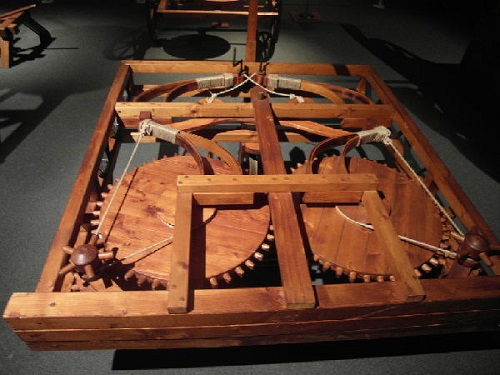8 Ways to Protect Imperial Tombs of China from Tomb Raiders
Conducted under the cover of darkness, grave robber is an old and dirty profession in China. These people use various techs to raid long-forgotten rare treasures, especially those in imperial tombs. However, where there are grave robbers, there are countermeasures. A few of the most common methods for imperial tombs are as follows:

The crossbow trap: it is triggered by tripping a cord or stepping on a mechanism that shoots a crossbow bolt from a hidden alcove.
1. Dummy tombs 虚墓疑冢
In ancient China, dummy tombs were often built to thwart the efforts of thieves or as tombs for their belongings, while the real tombs were laid in a separate area. The most famous dummy tombs are five Confucius dummy tombs set up by his disciple Zhongni. According to Chaxiangshi Congchao, a book written by Qing scholar Yu Yue, during that time there were five fake graves on the west side of the Confucius tomb aiming to prevent from future robbery.
2. Cliff cave tomb 构筑崖墓
Cliff cave tomb at is another tech to protect the tomb from robbery. Those tombs built in mountains are apparently harder to rob then those on the ground. Of course average people cannot afford to build this kind of tomb.
The Han Tombs in Mancheng are the tombs of Liu Sheng, Prince Jing of Zhongshan and his wife, They are cave tombs built in 113 to 104 A.D. by manpower in mountains. Tomb of Lu King in Shandong and Xuzhou Guishan Han Tomb are also of this kind.
3. Molten-iron-sealed tomb 铁水浇筑
Cave tomb in the mountains is very effective in keep away tomb robbers, but there is an obvious “loophole” that it is easy to find the tomb gate. How to set up the tomb gate was a difficult task. However clever craftsmen solved this problem by sealing the gate with melton iron.
Qianling Tomb is a typical example of the kind. The tomb chamber of Qianling was closed up with a stone gate sealed with iron to make it secure. The Tomb was not robbed, so the cultural relics inside the tomb were preserved perfectly.
4. Sand & stone trap 积沙积石
The best anti-robbery tech for mound tomb is sand & stone trap. It involves a complex mechanism that, when triggered, drops a heap of sand or stones on the unsuspecting intruder from above, thus burying them alive. Zeng hou Yi Tomb, Gushi Tomb and Tomb of King of Zhongshan are all of this kind.
5. Crossbow trap 伏弩
Crossbow trap is the most mysterious anti-theft device; the crossbow trap is triggered by tripping a cord or stepping on a mechanism that shoots a crossbow bolt from a hidden alcove. Legend has it that the tomb of the First Emperor, Qin Shi Huang was installed with crossbows and arrows primed to shoot at anyone who enters the tomb.
6. Giant Stone Gate 巨石堵门
Another anti-theft way is to use self-acting stone to shut the giant tomb gate from behind. Usually there are at least three, or even seven giant stone gates at the entrance, each weighs from several tons to tens of tons.
One typical example is the Ding Tomb in Beijing. A “self-acting stone” was installed to shut the giant stone gate from behind. The “self-acting stone” is a little wider at the two ends carved with lotus petal design. When the stone gate is closed, the lower end of the slab is fitted into a hole cut into the ground while its upper end leans against the back of the giant gate. Tomb-robbers can’t open it from outside.
7. Placing Poisonous substances 置放毒物
Ancient people also use poisonous substances to protect the tomb. The most often used poison substance is mercury. The use of mercury can be found in many tombs before Han Dynasty. The evaporated mercury poisonous gas is a big trouble for grave robber.
Legend has it that the Tomb of Qingshihuang is filled with pools of poisonous mercury. Imperial engineers created large rivers of quicksilver. So much that the level of mercury inside could be deadly for any unprotected adventurers. And site samples also prove that there are high levels of mercury in the soil.
8. Killing craftsmen 屠杀工匠
This is another mysterious anti-robbery method; of course, it is the worst violation of human rights.
The famous Mausoleum of Qingshihuang was said to use this method. After the burial, in order not to divulge tomb secrets, the craftsmen who constructed the mechanical devices and knew of its treasures were all trapped by tomb gates and none could escape.

